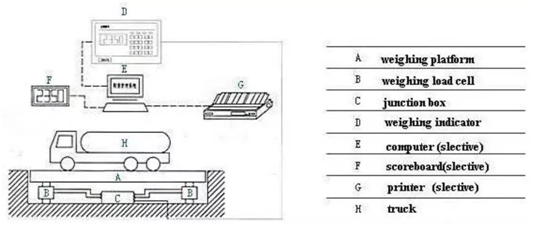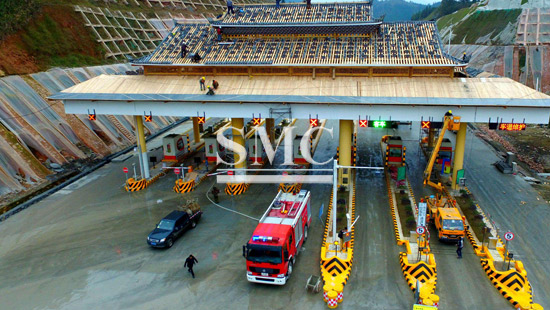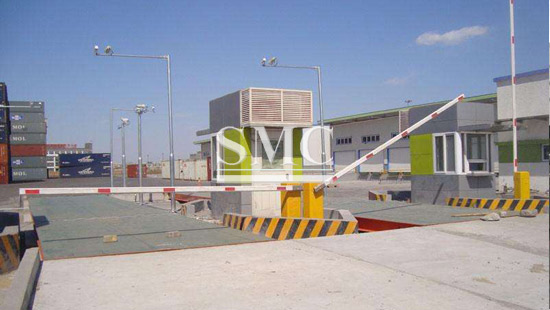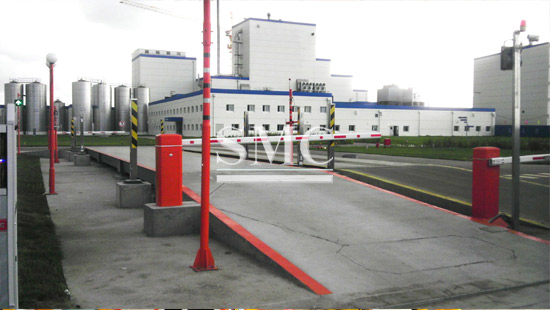
- Company overview The heart of SMC Vision & Philsophy Partnership Certifications Company culture
- Our service Design and Engineering Maintenance and Service Examine Production Line Upgrade and Transformation Storage and Logistics Processing, Trading and Distributor
- Management Our history Global responsibility Info Center
- Procurement center Internship
- Metal Steel Products Stainless Steel Products Aluminum Products Copper Products Galvanized Steel and PPGI Special Alloy Building Material
- Containers ISO Standard Container Equipment Container Storage Container Refrigerated/Reefer Container Offshore Container Container House Tank Container Container Fittings Container Trailer
- Gas Cylinder & Fire Extinguisher Cryogenic Liquid Cylinder Oxygen Gas Cylinder Storage Tank CNG Gas Cylinder LPG Gas Cylinder Hydrogen Gas Cylinder Nitrogen Gas Cylinder Industry Gas Cylinder Fire Extinguisher
- Metal Machinery Forming Machine Cutting Machine Processing Machine Bending Machine Block Machine Other Machinery Motor Spare Parts
- Mechanical Products Miscellany Mooring Equipment Marine Equipment Vehicle Industry Pressure Vessel Conveyor Belt Laser Equipment Bearing
- Electrical System Power Distribution Automation Electrical Cable Solar Power System Electric Protection System Transformer Production Line Lighting System
- Project Plastic Pipes and Pipe Fittings Fiberglass Reinforced Plastic Pontoon System
Electronic Truck Scale Management System
Width: 2~3.5m
length: 6m, 7m, 8m, 9m, 10m, 12m, 14m, 16m, 17.4m, 18m, 21m, 24m
Capacity: 10~200ton
A Truck scale (US), weighbridge (non-US) or railroad scale is a large set of scales, usually mounted permanently on a concrete foundation, that is used to weigh entire rail or road vehicles and their contents.
By weighing the vehicle both empty and when loaded, the load carried by the vehicle can be calculated.
2.1 Trunk Scale
It refers to a mechanical platform that transfers the weight of an object to a weighing sensor (load cell).
Here are the usual platform dimensions:
|
Type |
CSC-10 |
CSC-15 |
CSC-20 |
CSC-30 |
CSC-50 |
CSC-60 |
CSC-80 |
CSC-100 |
CSC-120 |
CSC-150 |
CSC-200 |
|
Platform dimension: W x L(m) |
|||||||||||
|
5 X 2 |
♣ |
♣ |
|
|
|
|
|
|
|
|
|
|
6 X 2.2 |
♣ |
♣ |
♣ |
|
|
|
|
|
|
|
|
|
6 X 2.4 |
|
♣ |
♣ |
|
|
|
|
|
|
|
|
|
6 X 2.5 |
|
♣ |
♣ |
♣ |
|
|
|
|
|
|
|
|
7 X 2.5 |
|
|
♣ |
♣ |
|
|
|
|
|
|
|
|
7 X 3 |
|
|
|
♣ |
♣ |
♣ |
♣ |
|
|
|
|
|
8 X 3 |
|
|
|
♣ |
♣ |
♣ |
♣ |
♣ |
|
|
|
|
9 X 3 |
|
|
|
♣ |
♣ |
♣ |
♣ |
♣ |
|
|
|
|
10 X 3 |
|
|
|
♣ |
♣ |
♣ |
♣ |
♣ |
|
|
|
|
12 X 3 |
|
|
|
♣ |
♣ |
♣ |
♣ |
♣ |
♣ |
♣ |
|
|
14 X 3 |
|
|
|
♣ |
♣ |
♣ |
♣ |
♣ |
♣ |
♣ |
|
|
15 X 3 |
|
|
|
♣ |
♣ |
♣ |
♣ |
♣ |
♣ |
♣ |
|
|
16 X 3 |
|
|
|
♣ |
♣ |
♣ |
♣ |
♣ |
♣ |
♣ |
|
|
16 X 3.3 |
|
|
|
|
|
|
♣ |
♣ |
♣ |
♣ |
|
|
16 X 3.5 |
|
|
|
|
|
|
♣ |
♣ |
♣ |
♣ |
|
|
18 X 3 |
|
|
|
|
|
|
♣ |
♣ |
♣ |
♣ |
♣ |
|
18 X 3.3 |
|
|
|
|
|
|
♣ |
♣ |
|||
Technical information of Electronic Truck Scale Management System:

Truck Scale basic specification:
|
Platform Width |
2~3.5m |
|
Platform Length |
6~24m |
|
Platform Thickness |
8-12mm thick tread plate |
|
Weighing Capacity |
10~200ton |
|
Structure |
U-shape beams |
|
Painting |
Anti-rust and anti-corrosion painting |
|
Accuracy class |
OIML III |
|
Safe Overload |
150% rated capacity |
|
Working temperature(Scale body) |
-30℃~+70℃ |
|
Working temperature(Indicator) |
-10℃~+40℃ |
|
Standard Accessories |
Load cell, Indicators, junction box, Signal cable and other standard equipment (e.g. lightning protector) |
|
Operating power supply |
240 / 220 / 110VAC, 50 / 60Hz |
*Load Cell is the core component of the truck scale, which plays the role of converting the weight value into the corresponding measurable electric signal. Its advantages and disadvantages are directly related to the quality of the whole Truck Scale.
Load Cell specifications:
|
Accuracy Class |
|
OIML III |
||
|
Output Sensitivity(=FS) |
mV/V |
2.0±0.002 |
||
|
Rated Capacity(Emax) |
T |
10/20/25 |
30/40LE/40/50 |
|
|
Maximum Number of Load Cell Intervals(nLC) |
|
3000 |
||
|
Ratio of Minimum LC Verification Interval Y=Emax/Vmin |
|
15000 |
7500 |
|
|
Combined error |
% F.S |
±0.023 |
||
|
Minimum Dead Load |
klb |
0 |
||
|
Safe Overload |
%F.S |
150 |
||
|
Destructive Load |
%F.S |
300 |
||
|
Zero Balance |
%F.S |
±1.5 |
||
|
Excitation Recommended |
V |
4~12(DC), Max:18(DC) |
||
|
Input Resistance |
Ω |
700±7 |
||
|
Output Resistance |
Ω |
700±7 |
||
|
Insulation Resistance |
MΩ |
≥5000(50VDC) |
||
|
Compensated Temperature |
°C |
-10~+40 |
||
|
Operating Temperature |
°C |
-35~+65 |
||
|
Storage Temperature |
°C |
-40~+70 |
||
|
Cable |
||||
Packaging of Electronic Truck Scale Management System:
In one 40’ container, we can load 2 units of 18m trunk scale or 2 units of the one less long than 18m

Truck scales can be used for two main purposes:
Selling or charging by weight over the bridge (Trade Approved)
Check weighing both axle weights and gross vehicle weights. This helps to stop axle overloading and possible heavy fines.
They are used in industries that manufacture or move bulk items, such as in mines or quarries, garbage dumps / recycling centers, bulk liquid and powder movement, household goods, and electrical equipment. Since the weight of the vehicle carrying the goods is known (and can be ascertained quickly if it is not known by the simple expedient of weighing the empty vehicle) they are a quick and easy way to measure the flow of bulk goods in and out of different locations.
A single axle truck scale or axle weighing system can be used to check individual axle weights and gross vehicle weights to determine whether the vehicle is safe to travel on the public highway without being stopped and fined by the authorities for being overloaded. Similar to the full size truck scale these systems can be pit mounted with the weighing surface flush to the level of the roadway or surface mounted.
For many uses (such as at police over the road truck weigh stations or temporary road intercepts) weighbridges have been largely supplanted by simple and thin electronic weigh cells, over which a vehicle is slowly driven. A computer records the output of the cell and accumulates the total vehicle weight. By weighing the force of each axle it can be assured that the vehicle is within statutory limits, which typically will impose a total vehicle weight, a maximum weight within an axle span limit and an individual axle limit. The former two limits ensure the safety of bridges while the latter protects the road surface.



here
for
price












